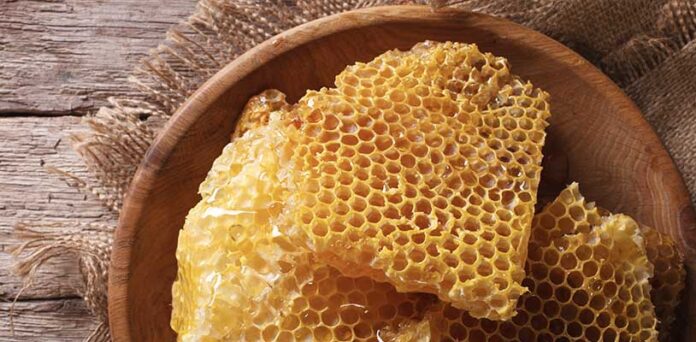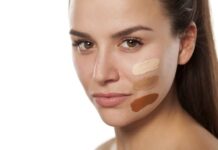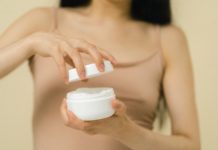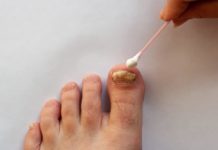Beeswax, that natural, golden substance secreted by honeybees, has been used for centuries in various applications, from candle-making to skincare. While yellow beeswax is commonly found in these applications, there’s another form that deserves its share of the spotlight: white beeswax. In this blog, we will delve into white beeswax, exploring its uses in do-it-yourself (DIY) projects and skincare routines. Let’s uncover the versatility and benefits of this remarkable substance.
What is White Beeswax?
Before we dive into its applications, let’s clarify what white beeswax is and why it’s special. White beeswax is a refined version of yellow beeswax, achieved by further processing and filtering. The result is a creamy white or pale yellow wax that retains all the wonderful properties of beeswax, making it perfect for various uses.
DIY Projects with White Beeswax
White beeswax is a versatile natural material for many DIY projects. Its flexibility, durability, and natural fragrance make it a favourite among crafters and artisans. Let’s explore some exciting DIY projects you can undertake using white beeswax:
Beeswax Candles
Candle-making with white beeswax is a popular DIY project. You’ll need white beeswax sheets, wicks, and a creative spark. The process is enjoyable and rewarding whether you make simple pillar candles or intricate decorative ones.
Beeswax Wraps
Are you concerned about reducing your plastic use? White beeswax wraps are an eco-friendly alternative to plastic wraps for food storage. You can create reusable, sustainable wraps that keep your food fresh with white beeswax, fabric, and heat.
Beeswax-based Furniture Polish
White beeswax can be your secret weapon for maintaining and beautifying wooden furniture. A homemade beeswax-based furniture polish protects your furnishings and adds a natural lustre.
Beeswax-based Cosmetics
From lip balms to mascara and eyebrow wax, white beeswax is a key ingredient in many DIY cosmetic products. It provides a smooth texture, moisture-locking properties, and a natural fragrance, making it a valuable addition to your beauty routine.
Beeswax in Art and Crafts
Artists and crafters also find white beeswax invaluable. Encaustic painting, for example, involves using molten beeswax as a medium. Additionally, sculptors and modellers appreciate the malleability of beeswax in their creations.
White Beeswax in Skincare
White beeswax’s benefits extend to skincare as well. Its natural characteristics make it ideal for making lip balms, lotion bars, and healing salves. Wax protects the skin from dryness by trapping moisture.
Commercial skincare products often contain white beeswax, with moisturisers, lip balms, and natural deodorants as common examples. However, it’s crucial to be aware of potential allergies or sensitivities when using beeswax-based products, so consider patch testing before regular use.
White Beeswax in Traditional and Alternative Medicine
White beeswax has a rich history in traditional medicine and is making a resurgence in alternative health practices. Ear candles made from beeswax are believed to help with earwax removal and relaxation. Beeswax poultices are used for their potential anti-inflammatory and pain-relief properties.
While more research is needed to validate these claims, white beeswax remains in holistic health practices.
Sustainability and Ethical Considerations
As we explore the uses of white beeswax, we must remember the importance of sustainable beekeeping and ethical sourcing. Supporting local beekeepers and initiatives that promote bee-friendly practices is a crucial step in ensuring the future availability of this valuable resource.
Are There Any Precautions Or Allergies I Should Be Aware Of When Using White Beeswax?
Be careful of risks and sensitivities while using white beeswax in DIY or skincare projects. Here are some important considerations:
Allergies
Bee products, especially beeswax, can cause allergies. Use white beeswax cautiously if allergic to bee stings or products. Use a patch test before applying beeswax products to larger areas of skin. Discontinue use immediately if you experience itching, redness, swelling, or adverse reactions.
Skin Sensitivity
While white beeswax is generally considered safe for most skin types, people with very sensitive or reactive skin may still experience irritation. Beeswax-based products should be patch-tested on a small area of skin before use. This will help you identify any potential sensitivity issues.
Purity and Quality
Ensure you purchase high-quality, food-grade, or cosmetic-grade white beeswax from reputable suppliers. Lower-quality or impure beeswax may contain contaminants or allergens that can cause skin reactions.
Cross-Contamination
If you have a known bee allergy, be cautious about cross-contamination. Make sure your tools and containers used for DIY projects with white beeswax are thoroughly cleaned and free from any traces of the wax before using them for other purposes.
Ingestion
If you plan to use white beeswax in recipes for lip balms, edible coatings, or other culinary applications, ensure that you are using food-grade beeswax. Even with food-grade beeswax, it’s essential to use it in appropriate quantities and follow recommended recipes to avoid any adverse effects from ingestion.
Consultation
If you have concerns about using white beeswax in skincare products, especially if you have a history of allergies or skin conditions, consult a dermatologist or healthcare professional for guidance.
Is White Beeswax Safe For All Skin Types?
White beeswax is generally considered safe for most skin types. Still, its suitability can vary depending on individual skin sensitivities and preferences. Here’s a breakdown of its safety for different skin types:
Normal Skin
White beeswax is usually well-tolerated by individuals with normal skin. It can help maintain skin moisture and protect against environmental factors without causing excessive oiliness.
Dry Skin
For dry skin, white beeswax locks in moisture and prevents water loss. It is often used in creams, lotions, and balms designed to provide hydration and relieve dryness.
Sensitive Skin
Many people with sensitive skin find white beeswax a suitable ingredient in skincare products. Its natural and gentle properties make it less likely to irritate. Still, it’s essential to perform a patch test to ensure compatibility.
Combination Skin
White beeswax can be used in skincare products for combination skin, targeting dry patches while not exacerbating oilier areas. However, product formulation is crucial to achieve the right balance.
Oily or Acne-Prone Skin
While white beeswax is generally non-comedogenic (unlikely to clog pores), some individuals with very oily or acne-prone skin may prefer lighter, oil-free moisturisers or skincare products that contain ingredients designed explicitly for acne control.
Takeaway
White beeswax, with its myriad uses in DIY projects, skincare, and even traditional medicine, is a versatile and valuable natural product. By incorporating white beeswax into your daily life, you benefit from its various properties and contribute to the sustainability of beekeeping practices. So, whether crafting homemade candles or nourishing your skin, embrace the wonders of white beeswax and enjoy its many benefits.















